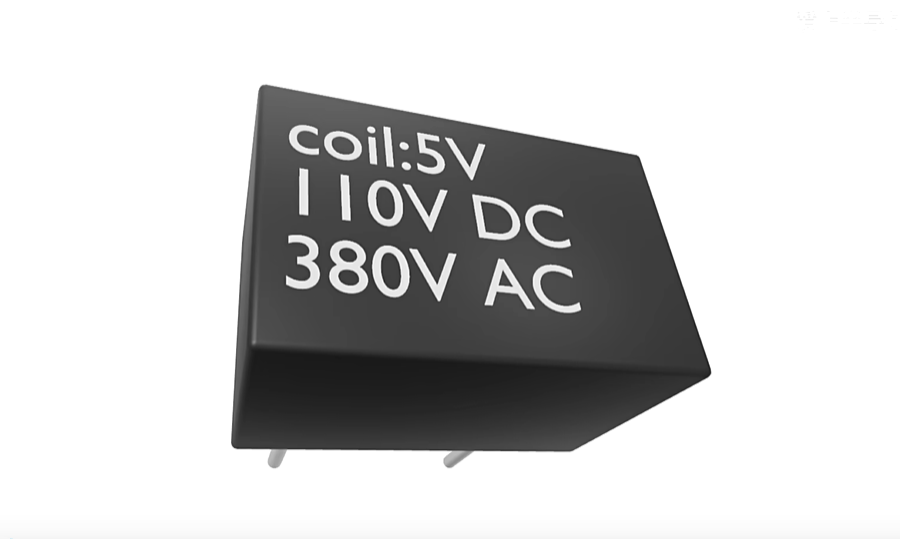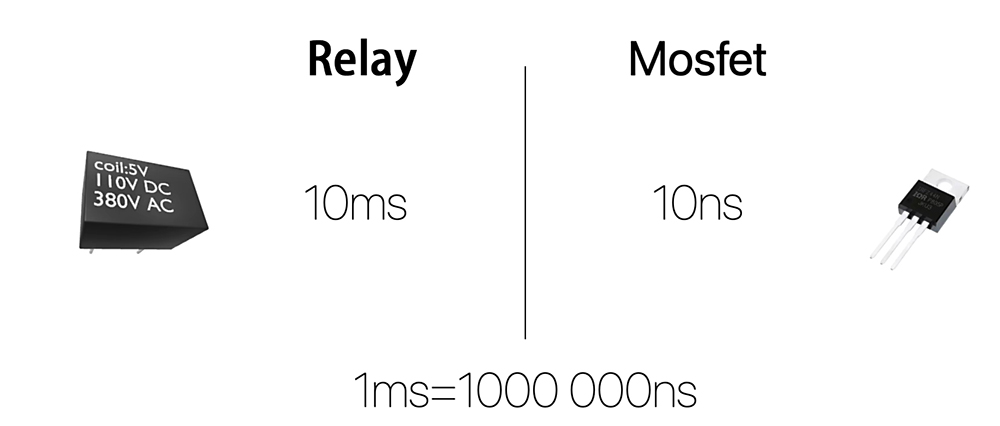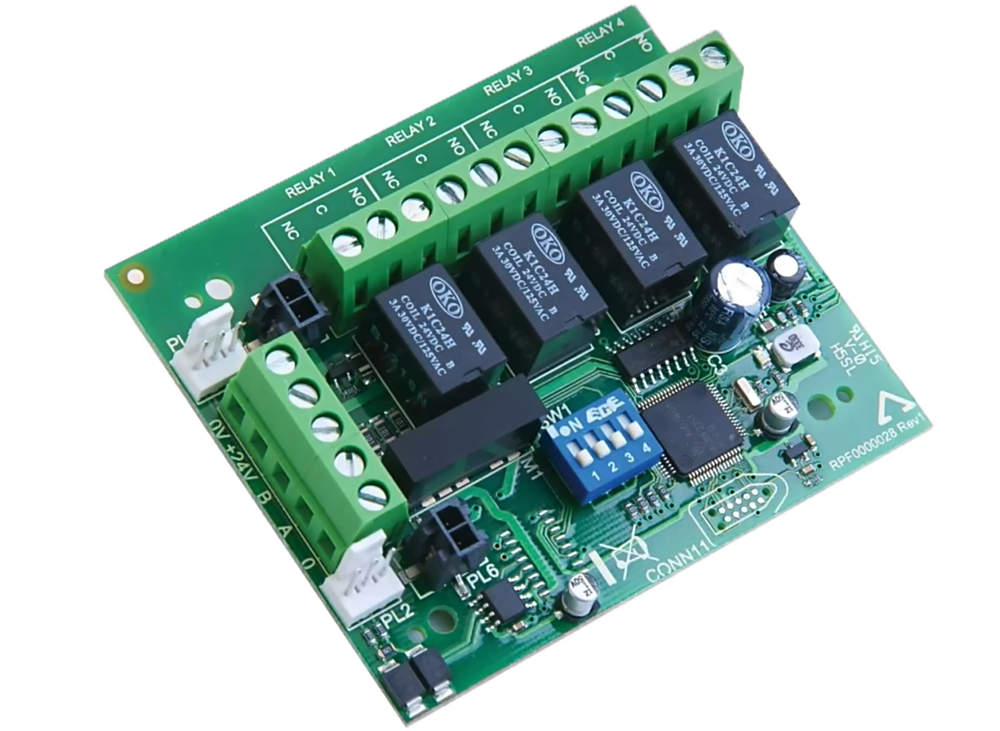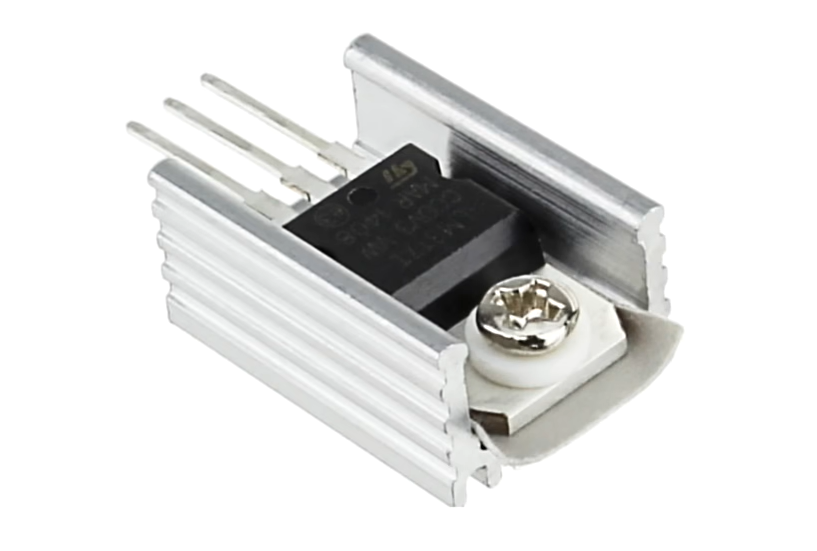In the realm of electronics, relays and MOSFETs are both pivotal components used for controlling circuits. Despite their similar roles, there exist significant differences between them that impact their suitability in various applications. In this article we will comprehensively compare the differences between MOSFETs and relays.
What is Relay?
A relay is an electrically operated switch that uses an electromagnet to mechanically operate a switching mechanism. It allows circuits to be switched by low-power signals, or where several circuits must be controlled by one signal. Upon receiving a small input of electrical current, the relay activates its switch for transmitting a much larger electrical current.

Relays(Coil:5V 110V DC 380 AC)
Relays are commonly used in many types of equipment and have various applications such as controlling large amounts of power or amplifying weak signals that come from sensor devices. They also provide isolation between the control circuit and the load circuit, protecting them from each other's faults or problems.
There are different types of relays including electromagnetic relays, solid state relays, thermal relays and others - each with their own specific uses based on their design characteristics.
What is MOSFET?
A MOSFET (Metal-Oxide-Semiconductor Field-Effect Transistor) is a type of transistor used in electronics for amplifying or switching electronic signals, control its on and off by controlling the gate voltage. It consists of four parts: Source, Drain, Gate and Body. The operation principle relies on controlling the width of a channel between source and drain regions by applying voltage at the gate terminal. There are two main types - n-channel (NMOS) and p-channel (PMOS), based on whether electrons or holes carry charge under normal operating conditions. MOSFETs are widely used due to their high input impedance, low power consumption, high-speed operation, scalability with technology advancement, and cost-effectiveness for mass production.

IRFZ44N MOSFET
MOSFET vs Relay: Operating Principle
Relay: A relay is an electromechanical switch. It operates by using an electromagnetic coil which, when energized with a small current, creates a magnetic field that pulls a mechanical switch into one of two positions to open or close the circuit.
MOSFET: A MOSFET is a type of transistor that works on the principle of electric fields. The gate voltage controls the resistance between its source and drain terminals—when sufficient voltage is applied to the gate terminal, it forms a conductive channel from source to drain.
MOSFET vs Relay: Application
In circuits that control small current loads, MOSFET can exert its characteristics of fast response and low power consumption, such as LED control and motor control. When controlling large current loads, relays can better withstand the high voltage and high current in the circuit, such as the control of household appliances such as air conditioners, televisions, and computers.
MOSFET vs Relay: Switching Speed
Relays, being electromechanical devices, have slower switching times(milliseconds) because they rely on the physical movement of metal contacts to open or close a circuit. This mechanical action inherently limits the speed at which relays can operate.
On the other hand, MOSFETs (Metal-Oxide-Semiconductor Field-Effect Transistors) are solid-state devices that switch electronically without any moving parts. They operate based on changes in electric fields within the device, allowing them to switch extremely quickly—often in nanoseconds. This makes MOSFETs particularly useful for applications requiring high-speed operation.

Relay and MOSFET switching speed comparison
The action time of the relay is almost 10ms, while the conduction time of the MOSFET can reach 10ns. During the time the relay is used once, the MOSFET(MOS tube) can switch on and off 1 million times.
MOSFET vs Relay: Life Span & Wear
Relay: Since relays involve physical movement of components, they tend to wear out over time due to friction and arcing at the contact points during switching operations.
MOSFET: As solid-state devices with no moving parts or contacts that could wear out through use, MOSFETS generally have longer lifespans than relays under normal operating conditions.
MOSFET vs Relay: Isolation
Relay: Relays provide excellent electrical isolation between input (control side) and output as these two sides are mechanically coupled but electrically isolated.
MOSFET: In MOSFETs, the input and output are not isolated. This can be a disadvantage in some applications where electrical isolation is necessary.
MOSFET vs Relay: Power Consumption
Relay: Relays usually consume more power than transistors because they require current to hold the relay coil in place for maintaining its state.
MOSFET: MOSFETs only require power during switching operations (changing from on to off or vice versa). Once switched, no further power is required to maintain their state.
MOSFET vs Relay: Noise
Relay: Due to the physical contacts involved in operation, relays can generate noise (both electrical due to arcing and mechanical due to movement of parts).
MOSFET: As solid-state devices with no moving parts, MOSFETS operate silently and don't create any mechanical noise.
MOSFET vs Relay: Heat Dissipation
Relays, being electromechanical switches, generally don't generate a significant amount of heat during operation because they are either fully on or fully off, with no intermediate state where power would be dissipated as heat. However, some small amount of heating can occur due to the coil resistance when the relay is in an energized state.

Relay on PCB board
On the other hand, MOSFETs, which are solid-state devices, can generate considerable amounts of heat under certain conditions. When a MOSFET operates in its linear region (as opposed to being fully on or off), it behaves like a resistor and dissipates power as heat. Therefore, for higher-power applications where more current is flowing through the transistor or when it needs to operate in this linear region frequently or for extended periods of time, adequate cooling methods such as heatsinks or fans are necessary to prevent overheating and ensure reliable operation.

MOSFET for use with Heat Sink
Compare Relays and MOSFETs
| Characteristic | Relay | MOSFET |
|---|
| Principle of Operation | Electromechanical operation: Uses an electromagnetic coil to open/close mechanical contacts. | Solid-state operation: Controls current flow using electric fields (no moving parts). |
| Switching Speed | Slow (milliseconds) due to mechanical movement. | Fast (nanoseconds to microseconds) due to electronic operation. |
| Lifetime/Durability | Limited by mechanical wear and tear on the contacts, leading to eventual failure after a certain number of switching cycles. | No physical contact or movement means virtually unlimited switching cycles under normal conditions, limited mainly by thermal stress and electrical overstress events. |
| Electrical Isolation | Provides good isolation between control and load circuits because they are physically separate systems. | Does not inherently provide electrical isolation as control voltage and load current share same channel in device structure; additional components/circuits needed for isolation if required. |
| Noise Generation | Can generate clicking noise during operation due its electromechanical nature. | Silent during operation as it's a solid-state device. |
| Heat Dissipation/Management Requirement | Mild heat generation; usually do not require heatsinks or fans. | Can generate significant heat depending upon operating conditions & power levels; may need heatsinks/fans for cooling especially in high-power applications. |
How to Select Relays and MOSFETs
Choosing between relays and MOSFETs for a specific application involves considering factors such as switching speed, electrical isolation, power levels and heat dissipation, durability expectations, noise considerations, and cost and size constraints.
MOSFETs are typically favored for high-speed switching applications due to their ability to switch rapidly (in microseconds) and silently; they also offer virtually unlimited operational cycles due to their solid-state nature. However, they may require active cooling at higher power levels and do not inherently provide electrical isolation. Relays can be preferable when electrical isolation is needed or when dealing with higher power levels that don't allow for active cooling. They have mechanical parts which limit their lifespan but tend to cost less than MOSFETs while taking up more space on the PCB.
Summary
In conclusion, while both relays and MOSFETs serve as effective switching devices in electronic systems, they each have their unique strengths and limitations. Relays are electromechanical switches that offer electrical isolation and can handle high power levels but at the expense of slower switching times due to their mechanical nature.
In contrast, MOSFETs are solid-state devices that provide extremely fast switching speeds—down to nanoseconds, but may require careful management of heat dissipation particularly at higher power levels.
Frequently Asked Questions
1. Can MOSFET and relay replace each other?
In some applications, a MOSFET can replace a relay and vice versa. However, this largely depends on the specific requirements of your circuit or system such as switching speed, power level, electrical isolation needs, cost considerations and space constraints.
2. Can a MOSFET replace a relay?
Yes, in many cases where fast switching times are required and where the power levels are within the handling capacity of the MOSFET, it can be used to replace a relay. However, relays have advantages in situations requiring high voltage or current handling capabilities or when electrical isolation is needed.
3. What is the difference between a solid state relay (SSR) and a MOSFET?
A Solid State Relay (SSR) uses semiconductor devices like thyristors or transistors (including MOSFETS) to switch currents up to around 100 amps. SSRs offer similar benefits as that of mechanical relays with respect to electric isolation but also provide faster switching speeds similar to that of transistors/MOSFETS.
4. Why use a relay instead of transistor(MOSFET)?
Relays can handle higher voltages than most transistors which makes them suitable for certain high voltage applications that transistors cannot safely accommodate without risk of damage due to overvoltage conditions.
5. Which is better: Relay or Transistor(MOSFET)?
Neither device could be considered universally 'better' than the other; rather their suitability depends on application-specific requirements including load characteristics (AC vs DC), operating environment conditions (temperature range), desired lifespan/reliability under given conditions etc., along with factors like cost & design complexity.